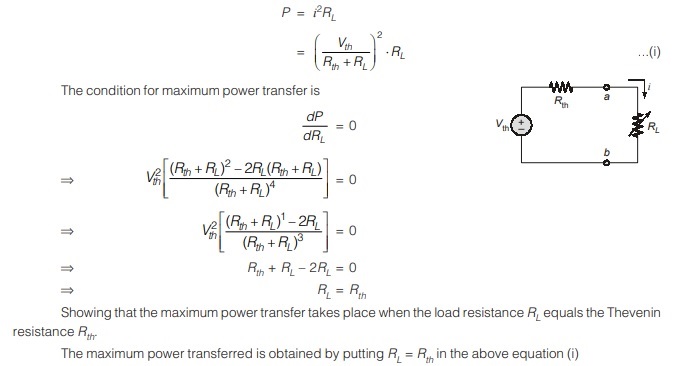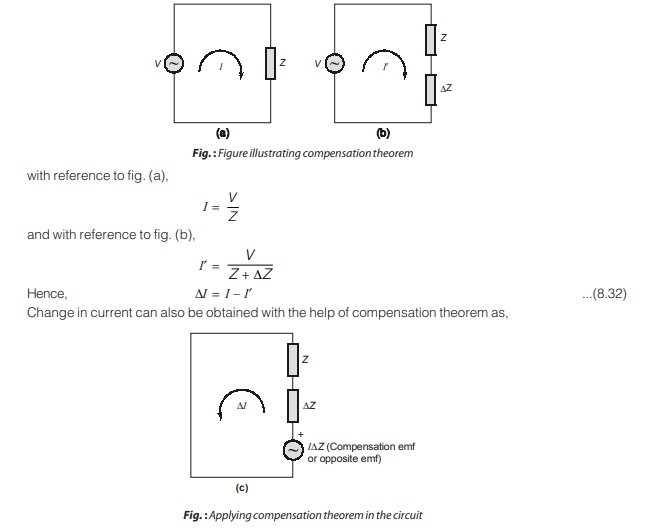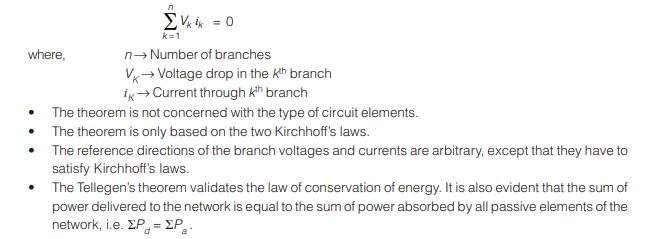Maximum Power Transfer
In many practical situations, a circuit is designed to provide power to a load. There are applications in areas such as communications where it is desirable to maximize the power delivered to a load. The Thevenin equivalent is useful in finding the maximum power a linear circuit can deliver to a load. We assume that we can adjust the load resistance RL. If the entire circuit is replaced by its Thevenin equivalent except for the load, as shown in figure, the power delivered to the load is


Superposition Theorem
It states that for a linear circuit containing two or more independent sources, any circuit voltage or current may be calculated as the algebraic sum of the individual currents or voltages caused by each independent source acting alone.
Since ac circuits are linear, the superposition theorem applies to ac circuits the same way it applies to dc circuits. The theorem becomes important if the circuit has sources operating at different frequencies. In this case, since the impedances depend on frequency, we must have a different frequency domain circuit for each frequency. The total response must be obtained by adding the individual responses in the time domain. It is incorrect to try to add the responses in the phasor or frequency domain. So, when a circuit has sources operating at different frequencies, one must add the responses due to the individual frequencies in the time domain.
Compensation Theorem
If we are interested in finding the corresponding changes in various voltages and currents of a network subjected to a change in one of its branches, then compensation theorem provides us a convenient method for determining such effects.
In a linear time-invariant network when the impedance (Z) of an uncoupled branch, carrying a current (I), is changed by (∆Z), the currents in all the branches would change and can be obtained by assuming that an ideal voltage source of (VC) has been connected [such that VC = I (∆Z)] in series with (Z + ∆Z) when all other sources in the network are replaced by their internal impedances.
[The source voltage (VC) opposes the original current].
Consider the following description :

 Tellegen’s Theorem
Tellegen’s Theorem
Tellegen’s theorem is remarkable and one of the most general theorems of circuit theory. The statement of theorem can be given as:
- For any given time, the sum of power delivered to each branch of any electric network is zero.
- The summation of instantaneous power or summation of complex power of sinusoidal sources in an electrical network is zero.
Mathematically, for kth branch the theorem states that,

Note:
Tellegen’s theorem is applicable for any network, i.e., linear, non-linear, bidirectional, unidirectional, time variant, time invariant.
<< Previous | Next >>
Must Read: What is Network Theory?

